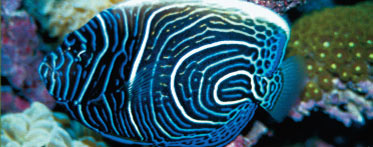Heaters and Chillers: Important Additions to Any Tank
Controlling the temperature of your aquarium is vital to the health of your fish and plants. In addition to filtering water, proper nutrition, and pH balance, the water temperature has a direct impact on both the health of your aquarium inhabitants and your enjoyment of it.
Heating Your Aquarium
Each of the different tropical fish species has a temperature range they prefer, but most fall between 75-80º F. It is more important to keep the tank the same temperature day and night, rather than which actual degree is chosen. A variance of only one to three degrees is enough to cause serious health problems for inhabitants. Normally, 3-5 watts per gallon is sufficient when choosing a heater. In high flow rates, wet/dry filters, or in an environment that gets below 55º, 5-8 watts per gallon is suggested. Remember to include the gallons in the sump when using wet/dry filters. Many of the newer heaters are very dependable, completely submersible and allow you to place the heater in a variety of locations or depths in the tank.
Important Note: Aquarium heaters must be unplugged during water changes. If the heater experiences sudden temperature changes while on (exposure to air or cooler top off or refill water) it can crack or explode.
Using a Chiller
Aquarium Water Chillers are designed to decrease temperature while preventing water that is being cooled, from coming in contact with any corrosive materials. All units come with temperature controllers that measure your aquarium's temperature and adjust it to the desired point.
If a chiller is needed for an aquarium it should be planned into the system as early as possible. Chiller units used for cooling aquarium water need to be placed in an area that allows sufficient ventilation and placed slightly away from the aquarium that you are cooling or your chiller may heat the water you want to cool as the unit expels heat. There are two different styles of water chillers. Drop-in chillers have a cooling coil that is placed right in the sump without the need for additional plumbing. The second type of chiller are in-line chillers. As the name implies, these chillers are plumbed in-line to your main filtration system. When properly matched with the right water pump, in-line water chillers boast flexible installation options allowing you to place the unit in a location away from the tank to help dissipate the heat that is generated.
Heater/Chiller Controllers
Providing a stable temperature environment for your fish is essential to their health and well-being, as well as saving you time and money spent on medications.
Mini-reef Aquarium
Remember that temperature control is one of the most critical factors in maintaining your tank's health. A daily fluctuation of just a couple of degrees is very stressful for the fish and will increase the incidence of disease and death. Take the temperature of your tank at its highest point late in the afternoon with all of the equipment running. That temperature should be the minimum setting on your heater. If the temperature is too high for your fish then add a chiller. Providing quality heating and cooling for your tank is one of the best investments you can make for the overall health of your tank. |
||||
|
|




